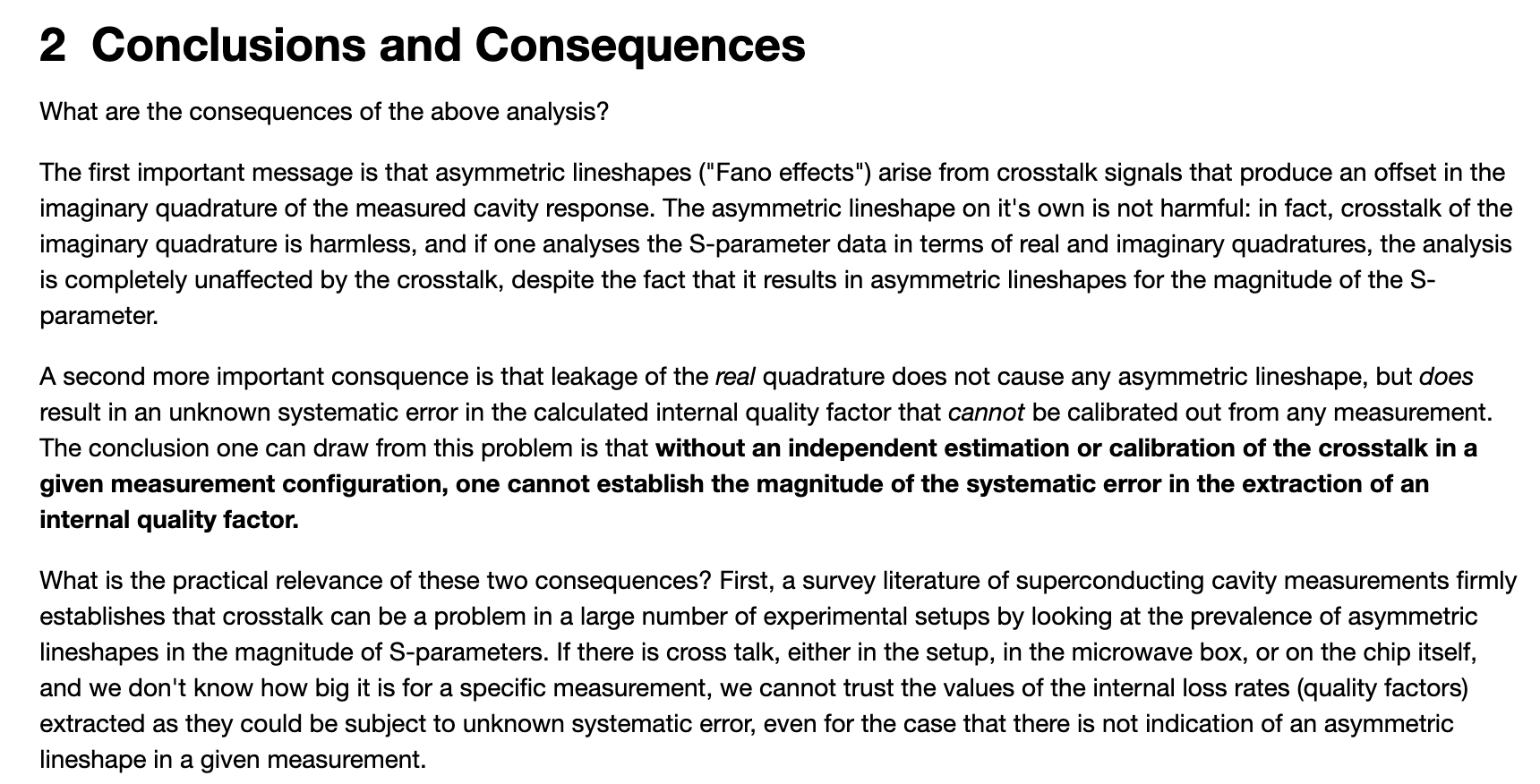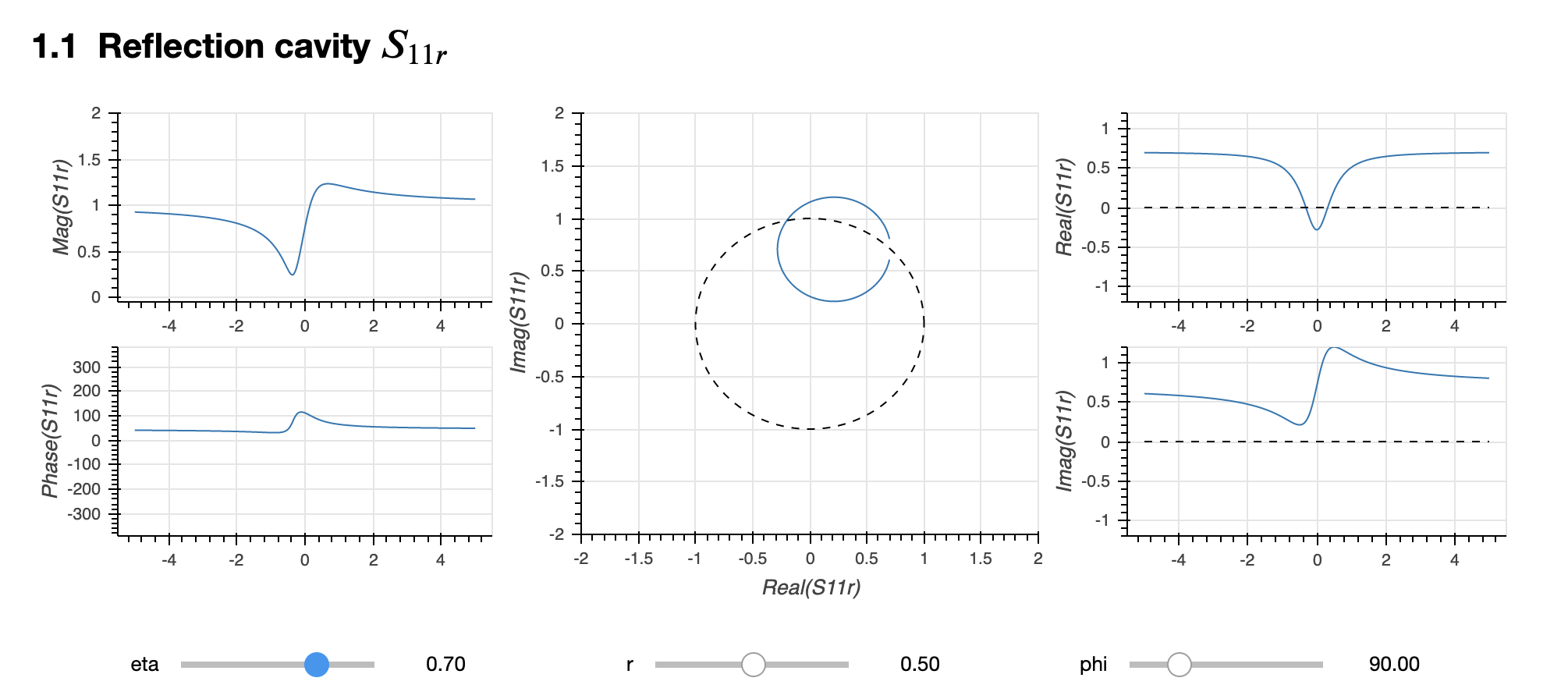Hi all,
For those that are interested, I’ve created a public repository with a “technical note / report” describing a source of asymmetric lineshapes in microwave resonator measurements:
It includes both a sort of “report” document as a jupyter notebook:

Some important conclusions for those performing microwave measurements;

And there is an “interactive” notebook that allows you to play with the crosstalk parameters and observe how this changes the observed S-parameters in your measurement:

Feedback welcome, I am currently looking for a way to “publish” this in some way, possibly just uploading it to Zenodo and creating a DOI that you can cite if you find it useful.
Long story below, but you can run it yourself “on the web” using this binder link:
https://mybinder.org/v2/git/https%3A%2F%2Fgitlab.tudelft.nl%2Fsteelelab%2Ftechnical-note-fano/master
Cheers,
Gary
2 Likes
BTW, comments and suggestions welcome, either through this forum, or also through the issue tracker in the repository!
BTW, same concepts probably also apply for optical cavity measurements
(or any other resonance measurement likely)
@anton-akhmerov (or other nerds) Is there an easy way to publish the interactive notebook on a website so that people can directly play with it without installing anything?
Yes, by using https://mybinder.org/
- Create an
environment.yml file that lists all conda/pip packages that you need.
- Go to https://mybinder.org, feed your git repository URL to binder.
- Share a link to it.
Here’s how I did it for example: binder link, context.
Seems even easier: supposedly binder would make the environment.yml for me?
But: helaas pindakaas, no luck…
Also, there is not clear documentation on mybinder what environment.yml should look like…
https://mybinder.readthedocs.io/en/latest/config_files.html
I guess it just assumes either it is smart enough to make it for you (apparently not…) or that it’s obvious
Most documentation seems to suggest creating it with conda…?
This is one example I found:
Not clear: do I need to give it a name? Will the name here be the default environment that binder will use? Does the name matter? Can I use root? Not so clear for me…but I’ll give it a go and see if I can reverse engineer it.
(is still building my pretty simple environment…)
(after 51 steps, seems to be pushing image in an infinite loop?

ok, had it running, but then found a bug in my code
but now I’m getting this binder error:

OK, tried adjusting link above and suspect it might have to be something to do with the “discourse link preview”
This is great! The papers you mention at the beginning of the notebook are papers I’ve been studying in detail over the past few months – I will have to spend some time thinking about the alternate explanation you present relating to cross-talk.
One addition I think is worth noting, by the way: The following paper by Guan et al came out this year, and provides yet another alternative derivation of asymmetric S21 lineshapes for hanger-style resonators (in their case resulting solely from reflection points at impedance mismatches surrounding the resonator). As Deng does in their paper, the authors here claim that Khalil’s definition of Q_i is not the true Q_i of the resonator (as it includes parameters relating to inductances and mismatches outside of the resonator itself), and proposes a geometric conversion factor between the Q fit by the Khalil S21 formula and the correct internal Q_i.
Thanks very much for this resource! :^) Cheers
Thanks, cool, I’ll take a look!
BTW, naughty people not publishing open access! Mega annoying from home. Just put your damn article on the arxiv people!
Also, BTW: I am pretty convinced that my conclusions from above still hold. If you cannot rule out crosstalk, then it is technically impossible to extract Q_i without systematic error. There is no “geometric correction” that can fix it.
ie. I believe that this statement is incorrect:

Very nice note Gary, thanks!





